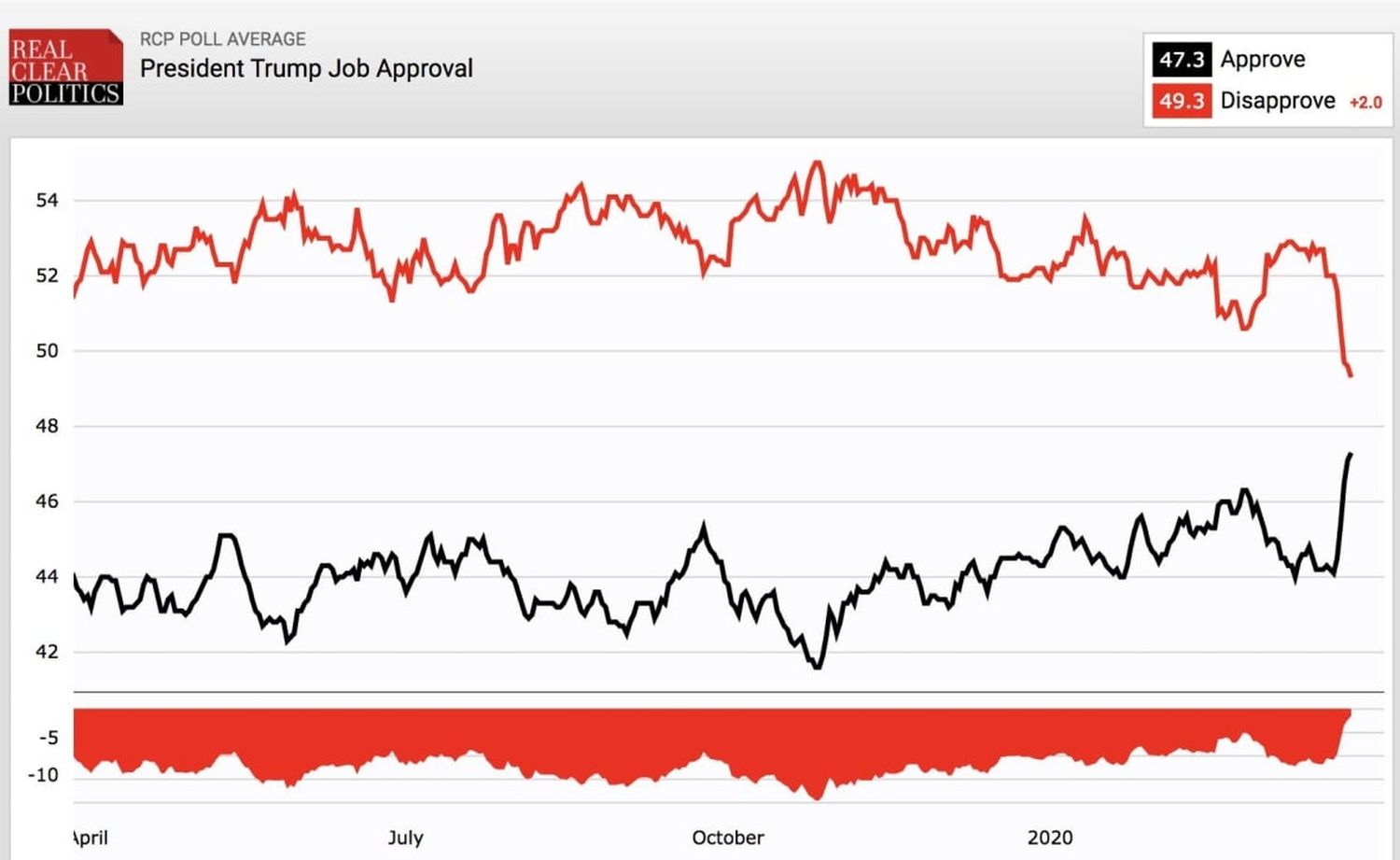
What are Trump approval ratings? These numbers show how many people like or dislike the job Donald Trump did as President. Polls measure this by asking a group of people their opinions. Approval ratings can change quickly due to news events, policies, or public speeches. They help gauge public sentiment and can influence political decisions. Understanding these ratings gives insight into how the public views a leader's performance. Why do they matter? They can affect elections, policy decisions, and even international relations. Knowing the highs and lows of Trump's approval ratings can reveal much about his presidency and its impact.
Trump Approval Ratings: A Rollercoaster Ride
Donald Trump's presidency was marked by fluctuating approval ratings. These numbers often reflected the nation's divided opinion on his policies and actions. Here are some intriguing facts about Trump's approval ratings.
-
Trump's highest approval rating during his presidency was 49%. This peak occurred in February 2020, just before the COVID-19 pandemic hit the United States hard.
-
The lowest approval rating Trump received was 34%. This occurred in December 2017, following controversies such as the response to Hurricane Maria in Puerto Rico and the Russia investigation.
-
Trump's approval ratings were highly polarized. Republicans generally showed strong support, while Democrats largely disapproved of his performance.
-
Despite controversies, Trump's approval rating among Republicans rarely dipped below 80%. This loyalty was a significant factor in his political strategy.
-
Trump's approval ratings were often influenced by major events. For instance, his ratings saw a temporary boost following the killing of Iranian General Qasem Soleimani in January 2020.
Approval Ratings Compared to Previous Presidents
Comparing Trump's approval ratings to those of previous presidents provides context for understanding his numbers.
-
Trump's average approval rating throughout his presidency was around 41%. This is lower than the average for most modern presidents.
-
Barack Obama's average approval rating was approximately 47.9%. This shows a notable difference in public perception between the two leaders.
-
George W. Bush had an average approval rating of 49.4%. His ratings were significantly boosted post-9/11 but declined during the Iraq War.
-
Bill Clinton's average approval rating stood at 55%. Despite personal scandals, his ratings remained relatively high due to a strong economy.
-
Ronald Reagan's average approval rating was 52.8%. His ratings were bolstered by economic recovery and the end of the Cold War.
Factors Influencing Trump's Approval Ratings
Several factors played a role in shaping Trump's approval ratings throughout his presidency.
-
Media coverage had a significant impact. Trump's contentious relationship with the media often influenced public perception.
-
Economic performance was a key factor. Strong economic indicators generally boosted his ratings, while downturns had the opposite effect.
-
Trump's handling of the COVID-19 pandemic was a major factor. His ratings fluctuated based on public opinion of his response to the crisis.
-
Social issues, such as immigration policies and racial tensions, also influenced his approval ratings. These issues often polarized public opinion.
-
International relations, including trade wars and diplomatic efforts, played a role. Trump's unconventional approach to foreign policy was both praised and criticized.
Post-Presidency Approval Ratings
Even after leaving office, Trump's approval ratings continue to be a topic of interest.
-
Trump's approval rating among Republicans remained high post-presidency. Many supporters continued to view him favorably.
-
Among the general public, Trump's post-presidency approval rating was lower. This reflects the continued polarization in opinions about him.
-
Trump's influence on the Republican Party remains strong. His endorsement is highly sought after in GOP primaries.
-
Trump's approval ratings have been affected by ongoing legal issues. Investigations and lawsuits have kept him in the public eye.
-
Despite leaving office, Trump remains a significant figure in American politics. His approval ratings continue to be a barometer of his influence.
Final Thoughts on Trump Approval Ratings
Trump's approval ratings have been a rollercoaster, reflecting a deeply divided nation. From his controversial policies to his unfiltered communication style, opinions about him are anything but lukewarm. Some folks see him as a champion of economic growth and strong borders, while others criticize his handling of social issues and international relations. His ratings often spiked during moments of perceived strength, like economic booms, but dipped during crises, such as the COVID-19 pandemic. Understanding these fluctuations offers insight into the American political landscape and voter priorities. Whether you love him or loathe him, Trump's approval ratings tell a story of a presidency that left a significant mark on the country. Keep these facts in mind when discussing his legacy or comparing future leaders.
Was this page helpful?
Our commitment to delivering trustworthy and engaging content is at the heart of what we do. Each fact on our site is contributed by real users like you, bringing a wealth of diverse insights and information. To ensure the highest standards of accuracy and reliability, our dedicated editors meticulously review each submission. This process guarantees that the facts we share are not only fascinating but also credible. Trust in our commitment to quality and authenticity as you explore and learn with us.
